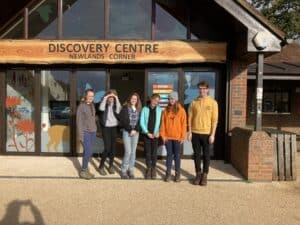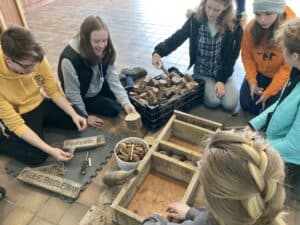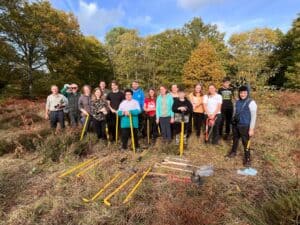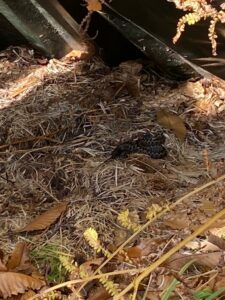 A small group of off-roaders continue to carve out illegal tracks in an area of ancient woodland in the Surrey Hills. In response, off-road user groups, residents and landowners are now united in taking action by reporting this illegal activity to the police to assist them in prosecuting the offenders.
A small group of off-roaders continue to carve out illegal tracks in an area of ancient woodland in the Surrey Hills. In response, off-road user groups, residents and landowners are now united in taking action by reporting this illegal activity to the police to assist them in prosecuting the offenders.
Green Lane Association Director and Surrey local Stuart Boreham said “It’s always infuriating to see the selfish actions of a few damaging the countryside we all love. Driving unsurfaced roads and byways, often called ‘green laning’, is a hobby enjoyed across the nation by our 5000 members and many others. We see drivers of all ages, races, and backgrounds, able-bodied and less able, peacefully using their vehicles to access the countryside. The Green Lane Association will, as here, always support councils and local groups to promote and enforce safe legal laning for all. I look forward to action being taken against the vandals.”
Kristina Kenworthy, Chair of the Surrey Hills Byways Working Group said “I am saddened and shocked by the ongoing abuse by a small group of off-road users, inflicting such destruction in the bluebell woods and special landscape of the Surrey Hills. This is not a new issue, but I am pleased to see the collaboration between residents, community groups, local councils and organisations and the Surrey Police to take serious action. A huge thank you to Surrey County Council for all their efforts so far in supporting the mitigation of this issue.”
Chairman of Mole Valley District Council, Paul Potter, who is a keen motorcyclist and advocate for safe and respectful riding along our green lanes, and Claire Malcomson, member of the Surrey Hills Board and Climate Change Cabinet Member for Mole Valley, with residents and concerned stakeholders have been attending regular meetings in the Ranmore area to try to save our green lanes. Some parts of these ancient byways are being destroyed by what could be just a handful of off roaders breaking the law through trespass, churning up the land and destroying the special woodlands in the Surrey Hills. This creates deep ruts in the tracks that then fill with water and make them impassable.
These meetings have welcomed the support of Surrey Police to help take serious action against this illegal and destructive activity.
Cllr Malcomson said, “We are so very thankful to the police for taking this seriously and supporting the residents. We want to also thank the Surrey Hills National Landscape for organising and funding the initiative. This will then deter the behaviour, supply evidence of who is doing this and identify the culprits. What a team.”
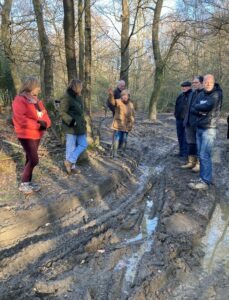
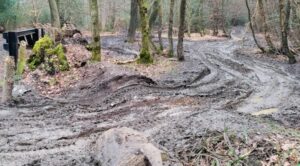
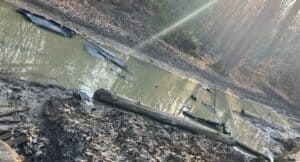
Damage by Off Road vehicles at Ranmore Common in the Surrey Hills National Landscape.
The Surrey Hills National Landscape is one of 46 nationally protected landscapes in the UK, having equal landscape status and protection to a national park. The Surrey Hills was designated on 8 May 1958, which makes it the first Area of Outstanding Natural Beauty (now known as National Landscapes) in southern England to be designated (the first was the Gower Peninsula near Swansea in 1956). The Surrey Hills National Landscape stretches across a quarter of the county of Surrey and includes the chalk slopes of the North Downs from Farnham in the west to Oxted in the east, and extends south to the deeply wooded Greensand Hills which rise in Haslemere. The Surrey Hills Board is a Joint Advisory Committee which is funded by Defra, the National Trust, Surrey County Council and the local authorities within the Surrey Hills area. For further information on the Surrey Hills please visit www.surreyhills.org

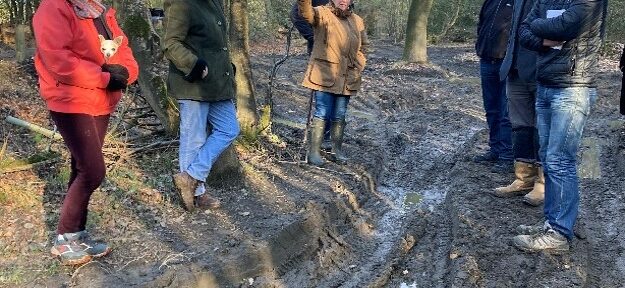
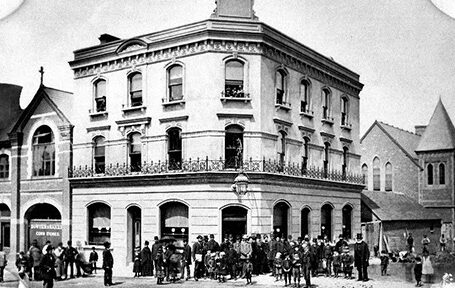
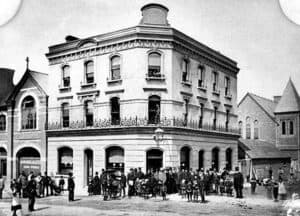
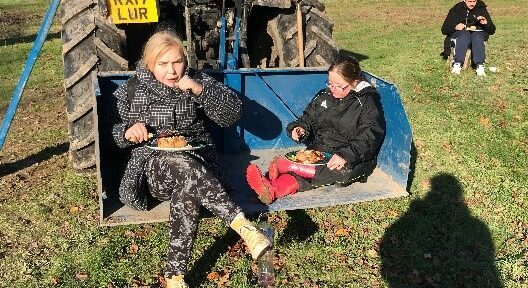
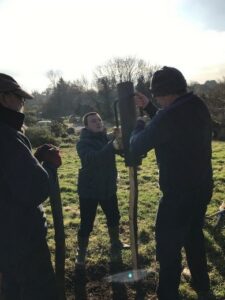
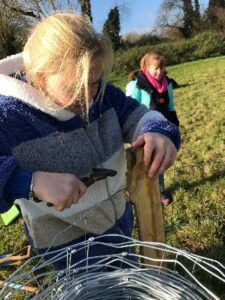




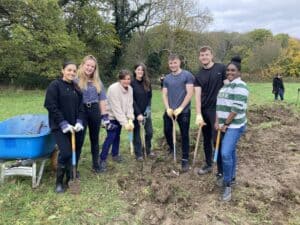
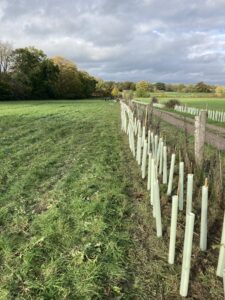
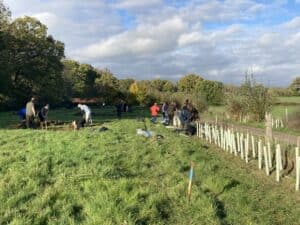 The day was a great success thanks to the team at Surrey Hills who organised the day so that we could be as productive as possible. They explained how the work needed to be done as well as how it would help preserve the local environment so everyone felt that it was a really worthwhile day out of the office. We are looking forward to planning more events together in the future.
The day was a great success thanks to the team at Surrey Hills who organised the day so that we could be as productive as possible. They explained how the work needed to be done as well as how it would help preserve the local environment so everyone felt that it was a really worthwhile day out of the office. We are looking forward to planning more events together in the future.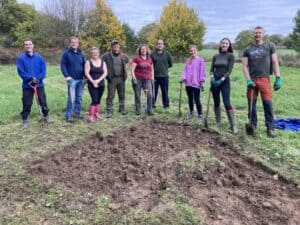
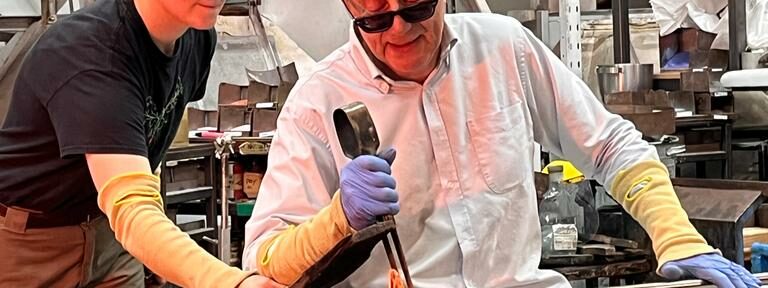
 On a cold November day over 30 members found the perfect place to keep warm! Adam Aaronson treated us to a fascinating display of specialist glassmaking at his West Horsley Studio.
On a cold November day over 30 members found the perfect place to keep warm! Adam Aaronson treated us to a fascinating display of specialist glassmaking at his West Horsley Studio.  Adam told how he had learnt his trade in Stoke having originally been encouraged to study law by his father!
Adam told how he had learnt his trade in Stoke having originally been encouraged to study law by his father!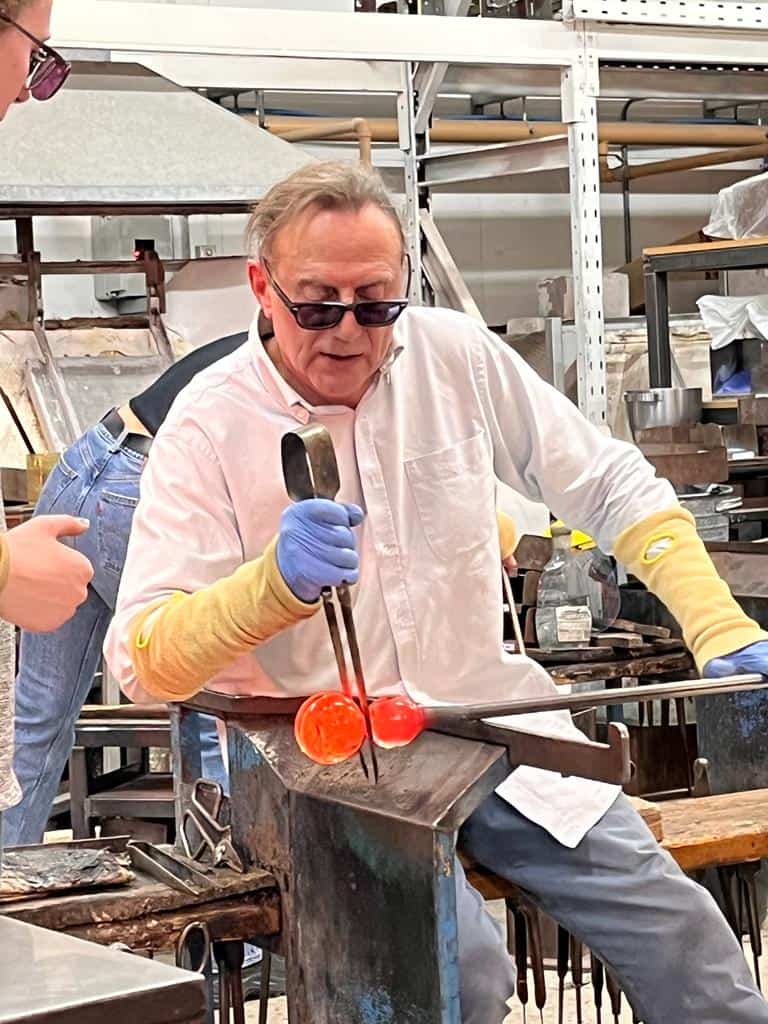
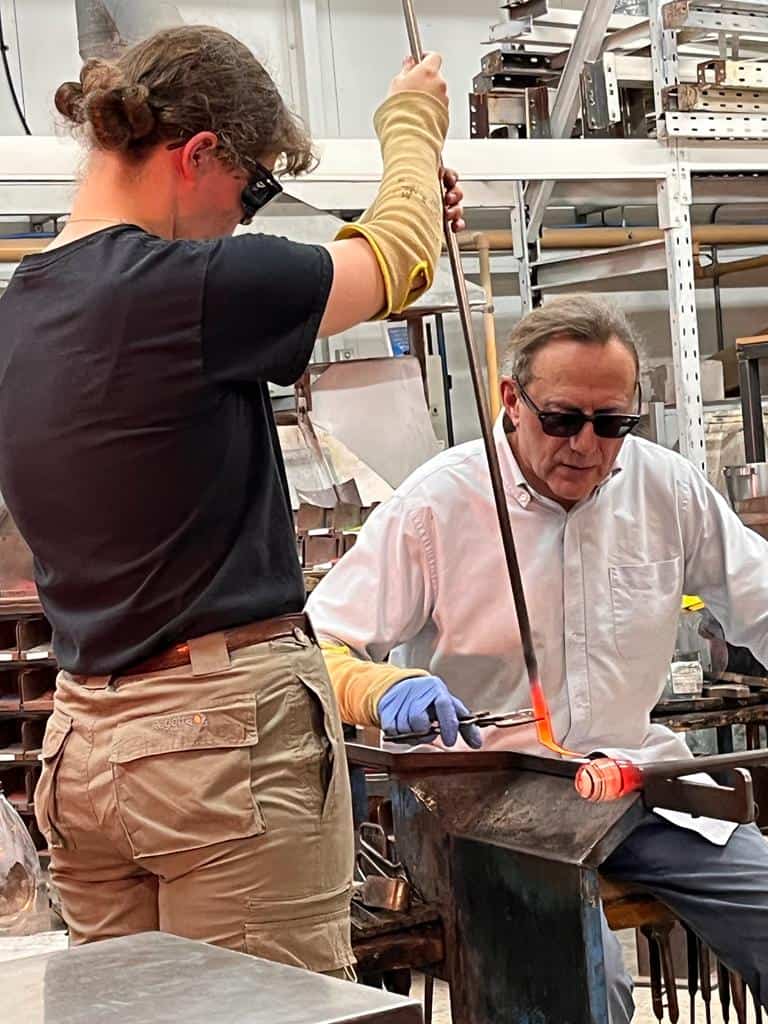
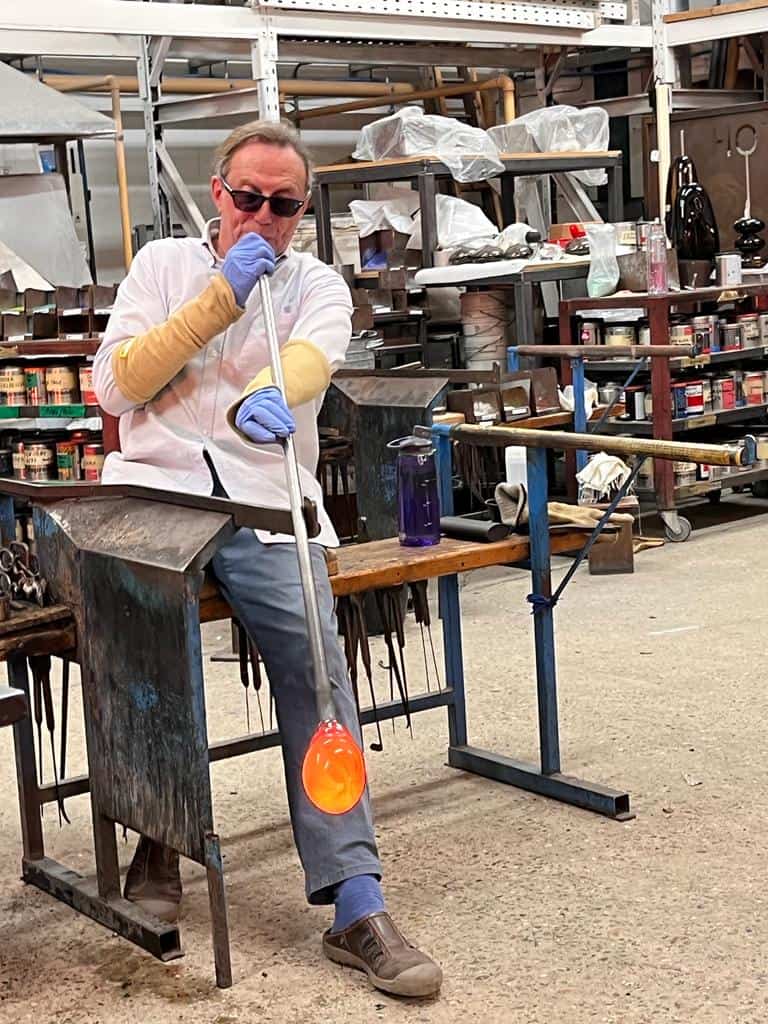
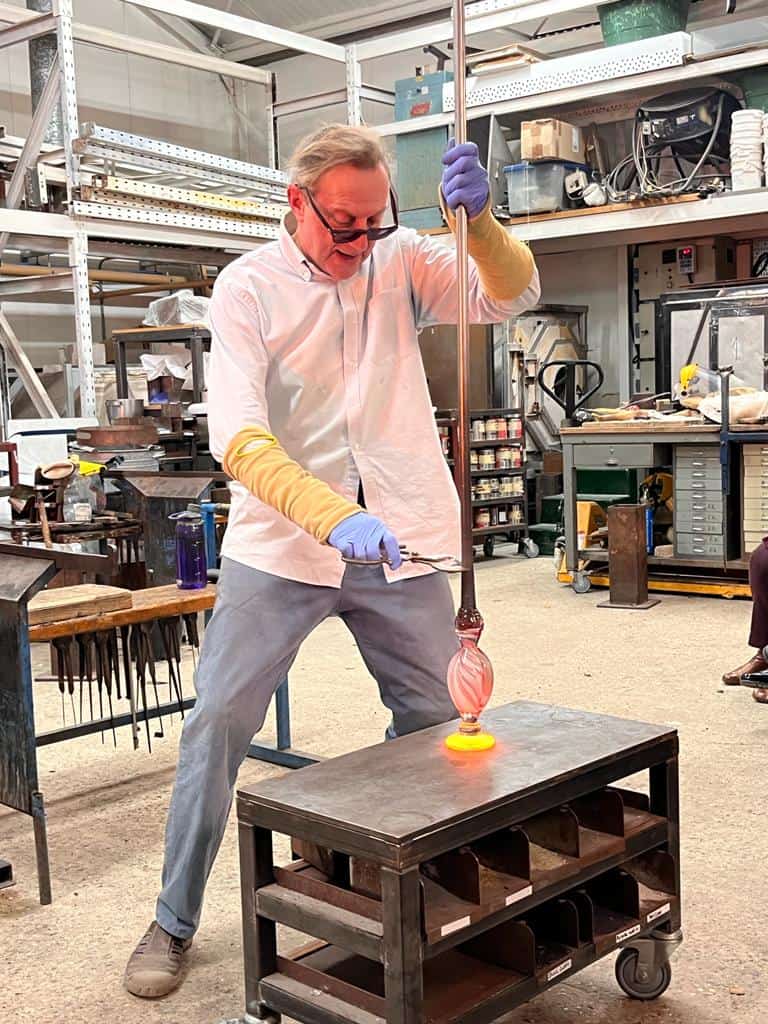
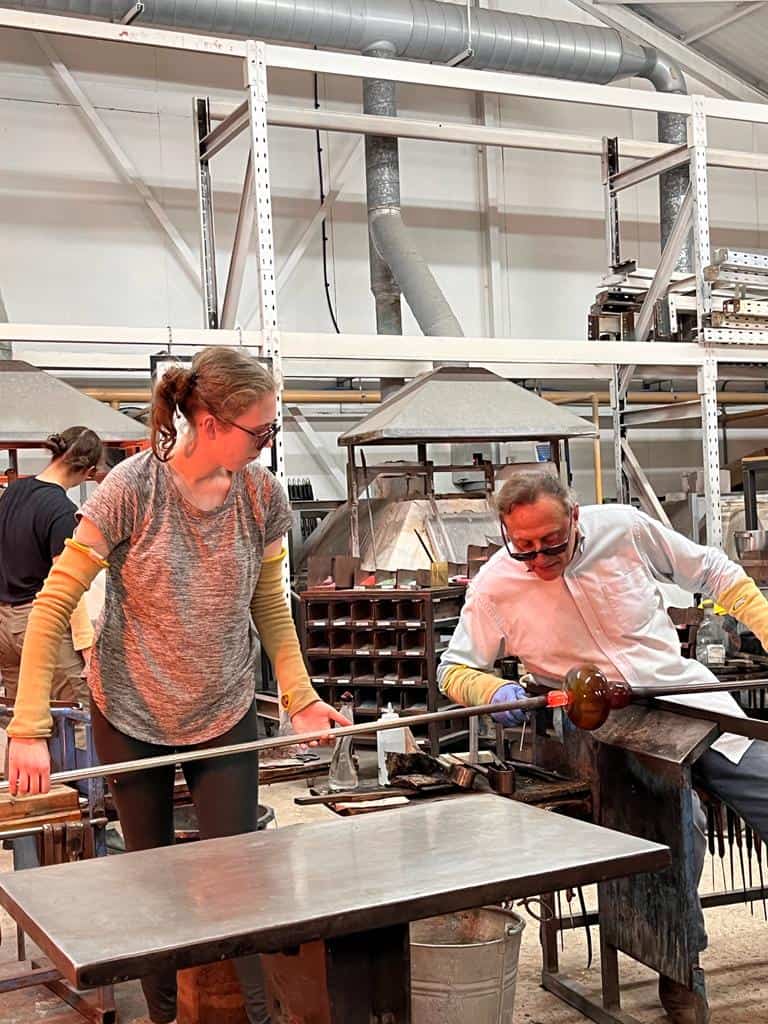

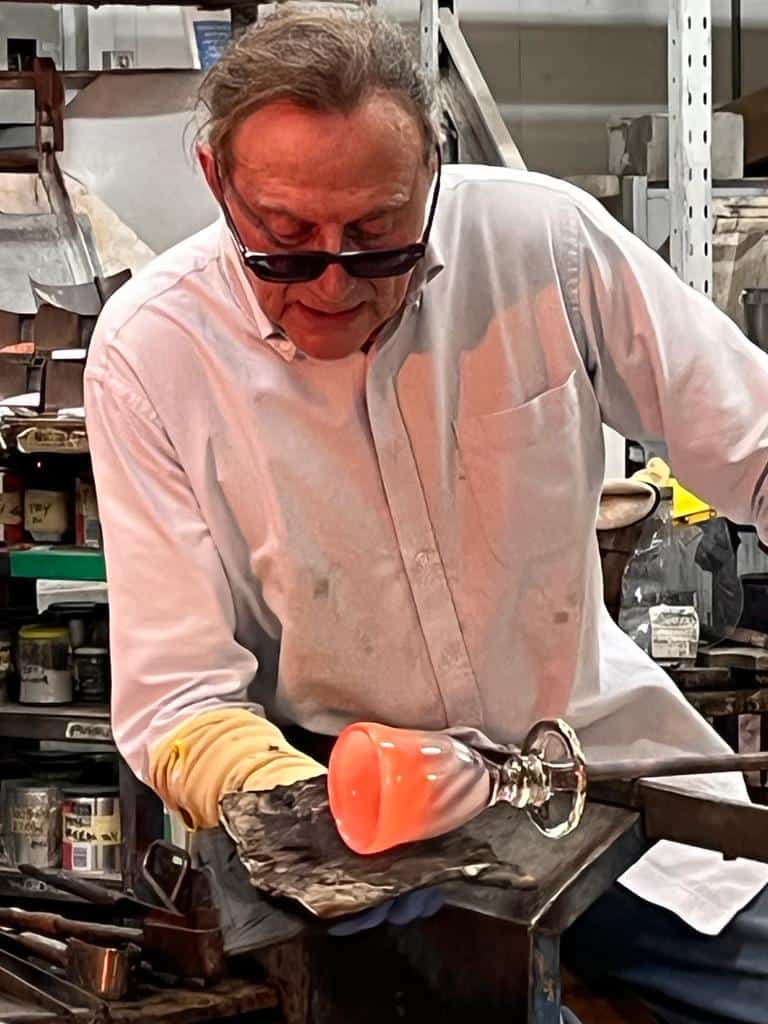

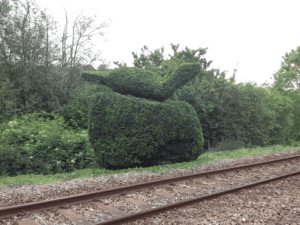 Many people will have heard of the Dorking Cockerel but few will have any knowledge of the “Chilworth Chicken”.
Many people will have heard of the Dorking Cockerel but few will have any knowledge of the “Chilworth Chicken”.

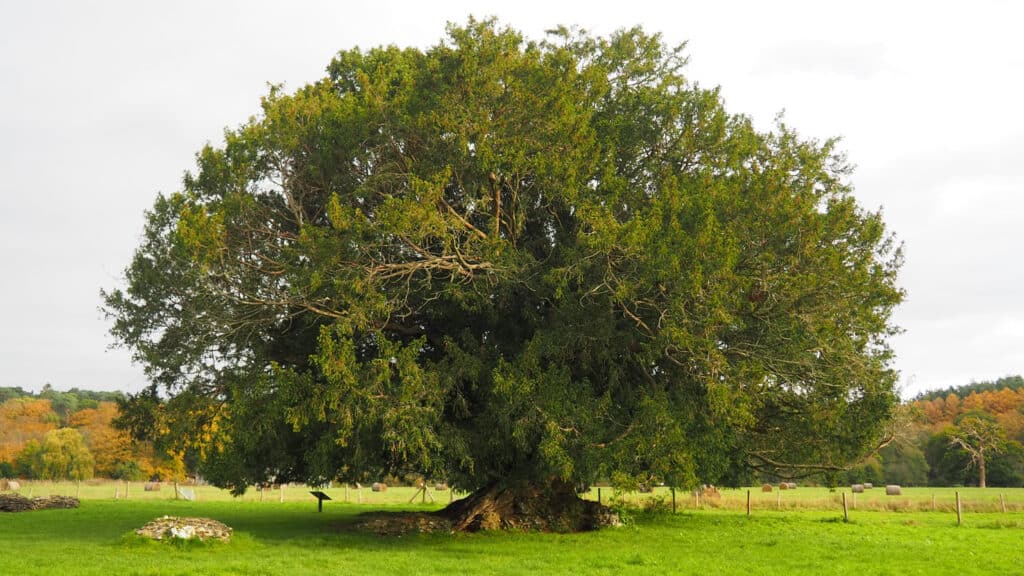
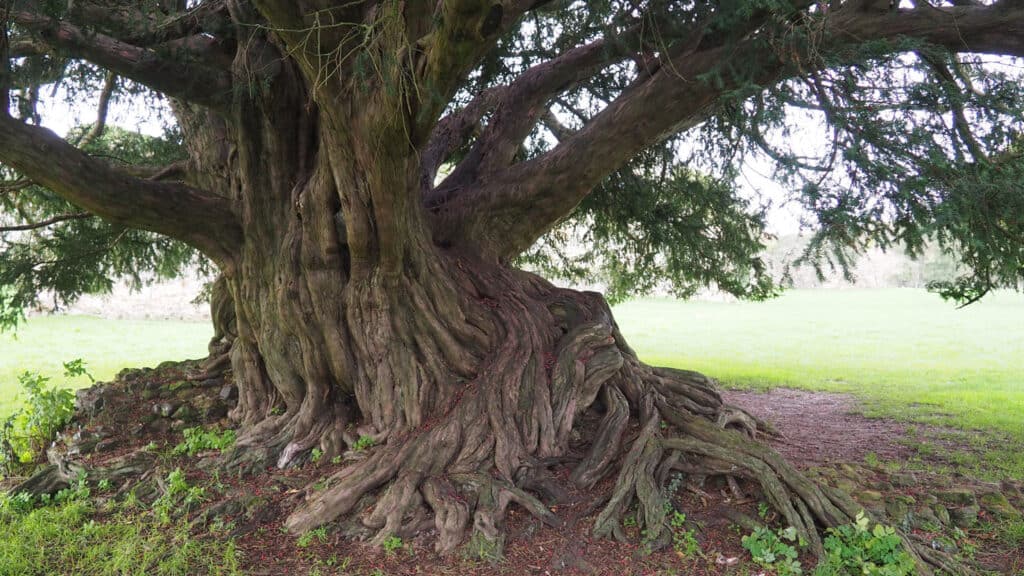
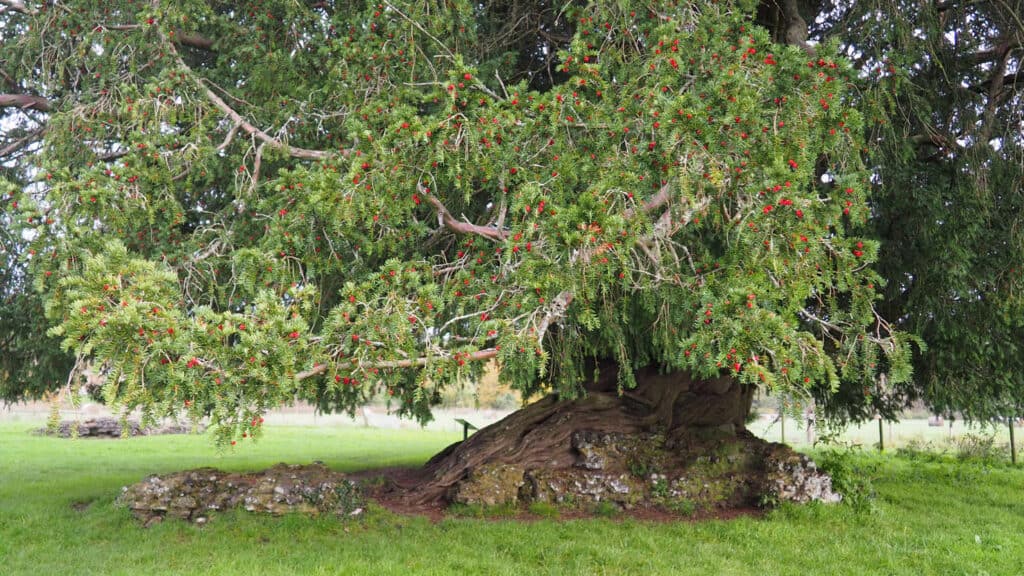
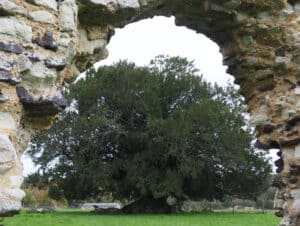 The Yew won with an impressive 16% of the vote. In second place was The Portal Tree Rowan in Midlothian which took 11% of the vote. Third place went to Derbyshire’s Layering Horse Chestnut, with 10% of the votes.
The Yew won with an impressive 16% of the vote. In second place was The Portal Tree Rowan in Midlothian which took 11% of the vote. Third place went to Derbyshire’s Layering Horse Chestnut, with 10% of the votes.
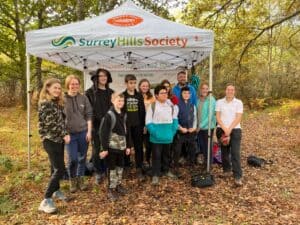
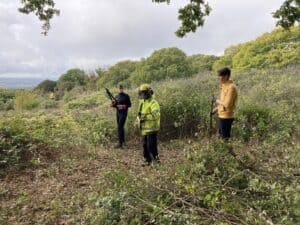 The Growth Team comprises of a group of adults with learning disabilities who carry out important conservation and access work across Surrey. They have been working up at Newlands Corner, to clear encroaching bramble and scrub from the grassland to encourage its restoration but also to help open up the viewpoint and create more places for people to sit.
The Growth Team comprises of a group of adults with learning disabilities who carry out important conservation and access work across Surrey. They have been working up at Newlands Corner, to clear encroaching bramble and scrub from the grassland to encourage its restoration but also to help open up the viewpoint and create more places for people to sit.